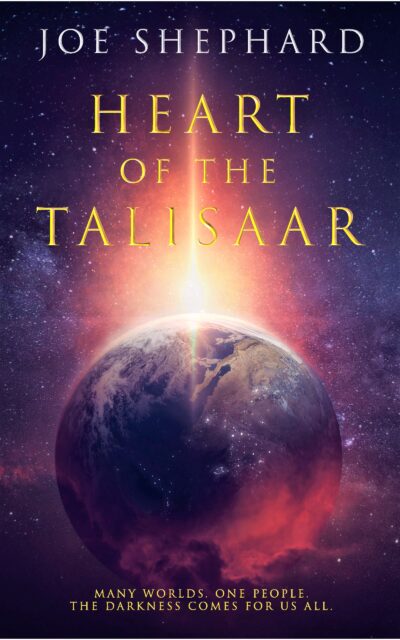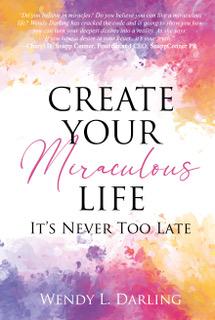Interviews
Book Talks with Author Joe Shephard | New Book Release Heart of the Talisaar

Studio Carry On Harry [ Interviews with Authors ] Book Talks with Author Joe Shephard . Occasion being his New Book Release “’Heart of the Talisaar‘” . Today in this interview session he is about to introduce his book to us and shares his experience as an author. He is also going to share his writing process and will share some tips for new authors .
About You and Your background ?
 I’m Joe, and I was born and raised near Maidenhead, in the southeast of England. I currently live in a rural part of east Cheshire with my wife and two children. Since my youth, I’ve been passionate about aviation and have been a commercial Airline Pilot since 2006. My other love in life is science-fiction, and I’ve been a stalwart fan of the genre for many years, whether it’s in a book, television show, comic, movie, or videogame; I’ve always been fascinated by it! I love escaping reality in the stories and am fortunate that my career also allows me to get away from it all.
I’m Joe, and I was born and raised near Maidenhead, in the southeast of England. I currently live in a rural part of east Cheshire with my wife and two children. Since my youth, I’ve been passionate about aviation and have been a commercial Airline Pilot since 2006. My other love in life is science-fiction, and I’ve been a stalwart fan of the genre for many years, whether it’s in a book, television show, comic, movie, or videogame; I’ve always been fascinated by it! I love escaping reality in the stories and am fortunate that my career also allows me to get away from it all.
How much does your life influences your story telling and the characters that you bring to life ?
The people I know, the places I’ve been, and the things I’ve experienced over the years have all played some part in shaping the book. I spent a few years in Turkey and Oman, which was a fascinating experience and allowed me to learn about new cultures and faiths. These elements play an essential part in the story, and specific aspects of my life—things I’ve experienced—have helped me shape the main characters and bring them to life.
What is the central theme of book ?
The main character, Kal’atora, is a disenfranchised war veteran who seeks ‘justice’ for his late father. The tale chronicles the final days of a devastating conflict fought in a far-flung part of our galaxy, between the human tribes of the Talisaar and the reptilian clans of the Qai’dinium. During the story, Kal discovers an ancient artefact left behind by their Gods and is granted remarkable powers which could help him and his allies turn the tide against an overwhelming foe. The story explores the fine line between justice and retribution, the corruption of those in power, and how our choices affect the ones closest to us. It includes elements depicting a unique faith, alien cultures, and strange languages, all spread throughout many worlds throughout the story. Worlds collide when later it’s discovered that the Earth is the Qai’dinium’s next target, and Kal and his friends must do everything in their power to save humanity before it’s too late.
Where did the idea came from ? How much did you tweak it ? Your Initial planning and analysis of final stuff ?
The majority of my ideas have come from my dreams. My debut novel, Heart of the Talisaar, is no exception. This story, in particular, was from a dream I had when I was about 12. The idea of a group of people coming to Earth to help save us fascinated me. From there on, the idea took hold, and I began to write down a plot and flesh out the characters and settings. Most of the plot and characters—even conversations—took place in my head! It took many years of formulation and development, but the COVID pandemic gave me plenty of time to complete the novel, which is available now. If an idea comes out of a dream and takes hold of you, if it plagues your mind and sticks with you, then it’s worth writing it down. I’m definitely a plotter when it comes to my writing. When I have an idea, I know the beginning and end of the story before I’ve even started. If I don’t like the ending and there’s no way of fixing it, I don’t bother carrying that story forward. The fun—and most difficult—part is creating the journey; how you get from A to B.
How much are you playing in the book as one of your characters ? Do you ever hide behind shades of your characters ?
I do share a few of Kal’s flaws. His tenacity, for one. I generally learn from my mistakes, but I am headstrong and always want to try things first myself, even against the advice of my peers sometimes. His rage later in the story and crying out to the cosmos for answers, for revenge, is definitely something I can relate to. Pushing away from the ones closest to you, looking inwards for answers and absolution instead of reaching out for help, and believing your way is the only way. I know how that feels.
what is difficult to write Goodness Of Character / Evil Intentions. What do you enjoy most out of developing them ?
Making each character unique is very challenging, especially for me as a first-time author. I’ve tried to take an amalgam of who I am, mixed in with other people I’ve known or elements of other fictional characters, and created these individuals with their own stories to tell. We all have strengths and weaknesses; the things we say and do and are said and done to us make us who we are. The characters in my book are far from perfect; even Rhune’s kind-hearted, level headed demeanour was born out of necessity from a past self-destructive quest for vengeance after losing someone close. Tobin—Kal’s best friend—brings levity to the proceedings, but even he hides his alcoholism and loneliness behind a confident humourous exterior. Without these inner conflicts, the characters felt less natural and plausible, and it was this aspect of the story’s creation I found the most rewarding.
Do you structure the flow of story in beginning itself or you improvise ? In your idea what is good to have before you hit a road block ?
Once I’ve had the initial idea for a story, I formulate a plan. Beginning and then straight to the end. i.e. Where does it all begin, and where do I want the plot and characters to end up. Now, this might all change later in writing, but essentially I want to know that all my hard work in fleshing out the ‘journey’ is worth my time. There’s nothing worse than an unsatisfactory lacklustre ending or an anti-climax. I will then begin to make notes on the basic plot structure—scenes and events relevant to driving the story—and main characters. Later I’ll create sub-plots that tie into the main plot. If I reach an impasse, and cannot continue down that path anymore, i.e. a roadblock, I simply scrap a story branch and go back to the main plot. This is the exciting part, and I was able to do this a great deal in the editing stages when I found I had written over 220,000 words and wanted to shave down to 120,000. Keeping the pace of the book without compromising the core plot. I took each chapter one at a time and tried to solve the problem—like an equation. You can still be poetic and use fancy metaphors and similes to describe every tiny detail, but sometimes you just want to get to the point…Summarising was very difficult but very satisfying on completion.
How many books have you written and how different is new book ? Difference is in which specific area ?
Heart of the Talisaar is my first book and hopefully won’t be my last. If it becomes popular, I plan to write a trilogy, which will explore the direction humanity takes in the future and look at our potential and the pitfalls we might face. I’ve had several other ideas for new stories based on dreams or influenced by current events, and not all of them are within the realms of science-fiction.
Which Character do you like most and why . Any real life inspiration ? Do you ever wish to meet this character in real life ?
I would have to say, Tobin. He’s a stalwart friend to Kal’atora and always has his back. Growing up, I would’ve definitely wanted someone like Tobin in my corner; despite his flaws, he’s entertaining to be around and sharp as a tack! Trust is a difficult thing to come by, but the pair of them trust each other implicitly, and I think that’s an essential quality of any long-lasting friendship.
Why will you recommend this book to readers ?
It’s an epic tale that draws you into a civilisation devastated by war, full of religious and political intrigue, with exciting characters facing their own demons whilst striving to prevent the end of mankind. Fast-paced action and exhilarating battles are equally interspersed throughout the novel, with sections that develop the characters and give you an insight into a vast empire spread across the stars. Set in the present day, as the story develops, you’ll learn of the common ancestry between our own civilisation and that of the Talisaar. The novel also depicts a secretive order tasked with safeguarding Earth’s inhabitants and how the main protagonist reaches out to a young woman in New York, who may hold the key to saving our world. There are sinister plots, growing discontent with the powers that be, and all the while, a mysterious malevolent force waits in the shadows. I believe there’s something here for every fan of science-fiction.
How do you deal with Negative Feedbacks ? How do you stay balanced with Positive Feed back ?
When I first showed an earlier draft of the first two chapters to a good friend, I really didn’t know how to take his criticisms. At the time, I admit I was inwardly offended by some of the feedback. But I quickly realised that he was only trying to help; it was exactly what I needed. A slap in the face to snap me out of a path of mediocre writing, and I was incredibly grateful for his opinions. I changed my style completely and was far more thorough and concise with my prose. I haven’t had any other feedback since the book’s release, other than positive praise from a few family and friends, but I now try and take all criticisms—good and bad—constructively. It’s essential to revise and perfect my craft—as it should be for any aspiring author—and there’s always room for improvement. Onwards and upwards for the next novel!
Have you already started working on next book ? What is on your mind for it ?
I’m currently working on a short story that I’ll publish for free, based on the pandemic. It’s written in the first person with present tense sections and others in the past tense. It’s taking me out of my comfort zone; writing a story of this type at around 7,500 words presents its own challenges. I want to try and flex my literary muscles; I’m still new to this and am trying to find my feet.
Any good tips you would like to share for new aspiring authors apart from saying just start the book ?
Don’t be put off the task ahead of you. Before you put pen to paper (or fingers to keyboard), start fleshing out ideas in your head. Look to the outside world for inspiration. Often, I had to step away from the screen, clear my head, or find new inspiration by going for a stroll. Flying is another escape for me. When I’m up in the sky at 36,000ft, it’s the best feeling looking out of the best office in the world. I realise that not everyone can do that, but some of my best ideas for completing a book section came when I was away from the computer. Once you have completed several drafts of your story (and you will!) show it to some beta readers to get their feedback and revise accordingly. Regarding publication, I sent the manuscript to many agents, either receiving a, ‘thanks but no thanks,’ or nothing in reply. In the end, I went down the self-publication route via Amazon KDP. It’s a very intuitive platform, and there’s a lot of support out there for new users.
How did you hear about CarryOnHarry ? Any message for Studio ? Any Suggestion that we can make it better ?
I first heard about CarryOnHarry when I was invited to participate in this interview by a representative via Facebook.
Amazon / Book Purchase Link
Your Official Website
https://www.goodreads.com/author/show/20384130.Joe_Shephard
Facebook Handle
https://www.facebook.com/joe.shephard.79/
Linkedin Handle
https://www.linkedin.com/in/joe-shephard-43170718
Interviews
podcasting microphone

Understanding Podcasting Microphones: An In-Depth Guide for Beginners and Professionals
Types of Podcasting Microphones
Dynamic Microphones
Dynamic microphones are the most popular choice for podcasting. They convert sound into electrical signals using a diaphragm, coil, and magnet. These microphones are robust, can handle high sound pressure levels, and require less gain than other types. This makes them excellent for capturing voices in less-than-ideal acoustic environments. The Shure SM7B and the Electro-Voice RE20 are industry standards among podcasters.
Condenser Microphones
Condenser microphones are sensitive and tend to capture a wider frequency range compared to dynamic microphones. They require phantom power to operate and are ideal for capturing subtle vocal nuances, making them great for voice work in studios. Notable condenser microphones include the Audio-Technica AT2020 and the Rode NT1-A, both widely admired for their clarity and depth.
Lavalier Microphones
Lavalier microphones, or lapel mics, are small, clip-on devices ideal for interviews and on-the-go recording. They ensure hands-free operations and are particularly useful for video podcasts. Wireless options add flexibility, allowing hosts to move freely during recordings. Popular choices include the Rode SmartLav+ and the Sennheiser ME 2-II.
USB Microphones
For those looking for simplicity and convenience, USB microphones are perfect. They connect directly to a computer without the need for additional equipment. While they may not deliver the same quality as XLR microphones, models like the Blue Yeti and the Audio-Technica ATR2100x-USB are excellent for beginners and home podcasters.
Important Features of Podcast Microphones
Frequency Response
Frequency response defines how a microphone reacts to different sound frequencies. Most voices fall within the 80Hz to 15kHz range, so a good podcasting microphone should adequately capture this spectrum. A flat frequency response is usually preferable, allowing for a more natural sound.
Polar Patterns
The polar pattern of a microphone determines its sensitivity in various directions. The most commonly used patterns are:
- Cardioid: Ideal for podcasting as it captures sound from the front while minimizing background noise.
- Omnidirectional: Captures sound from all directions, useful for roundtable discussions but picks up more ambient noise.
- Bidirectional: Captures sound from the front and rear, suitable for interviews between two people.
Sensitivity and Sound Pressure Level (SPL)
Sensitivity measures how effectively a microphone converts sound into an electrical signal. A higher sensitivity microphone captures softer sounds without requiring additional gain. Sound pressure level (SPL) measures how loud of a sound the microphone can handle without distortion. Choosing a mic with appropriate SPL ratings is crucial, especially in louder environments.
Essential Accessories for Podcasting Microphones
Pop Filters
Pop filters reduce plosive sounds (like “p” and “b” sounds) that can cause distortion. They are typically made of a screen or foam, which diffuses rapidly moving air before it hits the microphone diaphragm.
Microphone Stands and Boom Arms
Proper positioning is critical for optimal audio capture. Microphone stands and boom arms allow podcasters to adjust their microphone’s position easily while keeping hands free for notes or gestures.
Shock Mounts
Shock mounts prevent vibrations and handling noise from reaching the microphone, ensuring cleaner recordings. They are especially useful when recording in less controlled environments.
Audio Interfaces
For those using XLR microphones, an audio interface is necessary to convert the analog signal into digital for your computer. Popular models include the Focusrite Scarlett 2i2 and the PreSonus AudioBox USB, which provide excellent sound quality and ease of use.
Tips for Choosing the Right Microphone
Define Your Needs
Consider your podcasting style. Are you recording solo, interviews, or panel discussions? The type of conversations you have will dictate your microphone choice.
Budget Considerations
While it’s easy to get carried away with high-end equipment, plenty of budget-friendly microphones offer excellent quality. Determine a budget that allows for good quality without breaking the bank.
Test Before You Buy
Whenever possible, test microphones in-store to find the sound that best suits your voice. Listening to the audio capture can significantly influence your decision.
Read Reviews and Watch Tutorials
Before investing, check online reviews and tutorials. Many YouTube channels offer in-depth sound tests and comparisons to help you make informed choices.
Maintenance and Care for Podcasting Microphones
To extend the lifespan of your microphone, regular maintenance is vital. Here are some key maintenance tips:
- Keep it Clean: Dust and saliva can accumulate and affect sound quality. Use a soft cloth to wipe down your microphone regularly.
- Use Windscreens: For outdoor recording, use a windscreen to prevent wind interference and protect the mic from moisture.
- Store Properly: When not in use, store your microphone in a protective case to prevent physical damage.
Enhancing Your Podcasting Experience
Investing in a good microphone is just the beginning. To fully get the most out of your podcasting experience, include thorough planning, effective editing software, and quality recording space. An acoustically treated room, for example, can significantly reduce background noise and enhance vocal clarity.
Understanding the nuances of podcasting microphones will empower you to make informed decisions that improve your production quality. Armed with the right microphone and accessories, you can deliver a rich audio experience, engage your audience, and elevate your podcasting journey to new heights.
Interviews
Veteran actor Manoj Bajpayee speaks out against the growing influence of PR in Bollywood

From the BalleBalleRadio Entertainment Desk
Manoj Bajpayee, a celebrated actor known for his powerful performances, has recently voiced his concerns regarding the pervasive influence of PR machinery within Bollywood. Bajpayee argues that the industry’s increasing focus on public relations often overshadows genuine acting talent, leading to a skewed perception of success and merit.
Bajpayee’s comments come amidst ongoing debates about the phenomenon of ‘National Crush’ titles and the superficiality of fame. He suggests that such manufactured hype can be detrimental to the careers of trained actors who dedicate themselves to the craft, but may not possess the resources or inclination for extensive self-promotion.
He emphasized the importance of acting prowess over PR stunts, highlighting the potential humiliation faced by actors who have honed their skills through rigorous training, only to be sidelined by individuals prioritizing media visibility. Bajpayee’s own career, alongside that of fellow actor Piyush Mishra, serves as an example of sustained success built on consistent, quality performances rather than fleeting PR campaigns.
For more updates, follow us on https://facebook.com/balleballeradio. Like, Share, Comment!
-

 Editor's Choice3 months ago
Editor's Choice3 months agoRanveer Singh and Deepika Padukone Reunite for New Romantic Comedy
-

 Editor's Choice9 months ago
Editor's Choice9 months agoReview: Rekhachithram (2025) – A Masterful Blend of Mystery and Redemption
-

 Authors and Artists4 years ago
Authors and Artists4 years agoCreate Your Miraculous Life: It’s Never Too Late Wendy L. Darling
-

 People's Choice5 months ago
People's Choice5 months agoBollywood in August 2025: A Landscape of Sequels, Social Commentary, and Star Power





